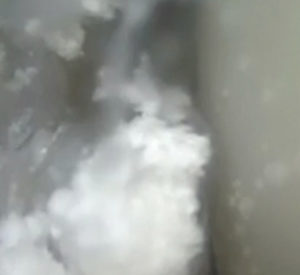Background & Etiology
Gout is a form of arthritis characterized by painful crystals forming inside of joints. This most commonly occurs in the first metatarsophalangeal (big toe) joint but can also occur in the finger, knee, ankle, or wrist.
Office Appointments and Telemedicine with Dr. Carreira

You can also book an office appointment or a telemedicine visit by calling Dr. Carreira’s office at 404-355-0743. Book now.
Crystals form in the fluid of the joint causing flare-ups of acute pain, often at night, and cause the affected joint to swell, increase in temperature, and become extremely sensitive. The flares usually subside on their own within 7-14 days. Crystals can cause long term inflammation or synovitis of the joint, which in and of itself can cause joint damage over the long term. For this reason, crystalline diseases, both gout and pseudogout, are associated with arthritis of joints. Therefore, controlling the crystal formation in the joint is helpful especially in the long term, and medications are typically the most helpful. Surgery is considered in special circumstances.
Risk Factors

Crystals of uric acid, which cause gout, arthroscopically extracted during a crystal removal surgery
The primary risk factor is hyperuricemia, an excess of uric acid in the blood stream. Hyperuricemia can also occur without causing gout.
Other risk factors include the following:
- age and sex, where the prevalence of gout increases with age and men have a higher risk for gout than women
- weight, where obesity is an important risk factor for gout;
- diet, as uric acid production is increased when one consumes high fructose-containing foods and drinks;
- alcohol consumption, which increases risk of hyperuricemia;
- diuretic medications, which increases risk of hyperuricemia;
- kidney transplantation, which decreases urate excretion; and
- specific genetic risk factors.
Differential Diagnoses
Other pathologies that manifest with symptoms similar to gout are CPPD (calcium pyrophosphate dihydrate) deposition, which is similar to classic gout but caused by a different type of crystal, and various types of arthritis (rheumatoid, osteoarthritis, psoriatic, septic).
Pseudogout
Pseudogout is caused by the deposition of CPPD crystals into the joint and presents with symptoms very similar to gout. The principle difference is in location: gout usually begins in the first metatarsal joint while pseudogout usually begins in the knee. While the symptoms are very similar to gout, it is important to correctly identify the crystal because treatments tailored to treating hyperuricemia, which causes gout, are not effective in treating pseudogout. There are currently no treatment options to reduce the occurrence of pseudogout crystals, and treatment is instead geared towards treating the symptomatic flare-ups.
Treatment
Gout may be managed with medical treatments and lifestyle changes, with surgery employed in extreme cases. Medical treatment includes three main pathways:
- urate lowering therapy
- immediate treatment for an initial gout flair-up
- anti-inflammatory treatment for gout flairs as they occur
It is especially important that the underlying hyperuricemia be treated rather than just treating symptoms as they occur, because ongoing high urate levels frequently lead to future complications. Lifestyle modifications may be used in combination with medical treatment to help decrease the chances of recurrence. Lifestyle changes that may help reduce or prevent gout include decreasing alcohol intake, avoiding sweetened beverages, maintaining adequate hydration, and weight loss, if appropriate.
Surgery: Arthroscopic Gout Removal
When conservative treatments fail arthroscopic surgery may be used to remove the gout-causing crystals from the affected joint, as seen in the video above. A small study published in Arthroscopy in 2009 (Wang et al.) compared patients treated with arthroscopic removal of gouty crystal deposits from the big toe joint to those treated with medicine alone. While both groups showed improvement, those treated with arthroscopy demonstrated better functional outcomes.
More videos from Dr. Carreira are available on his YouTube channel.


